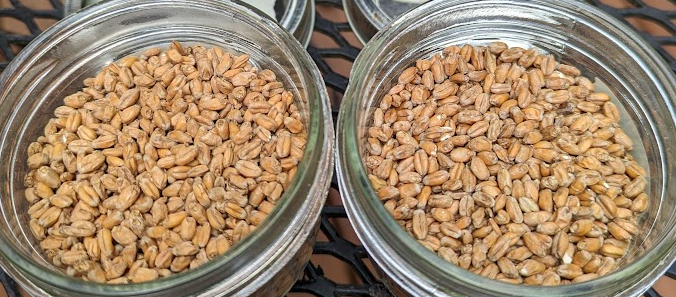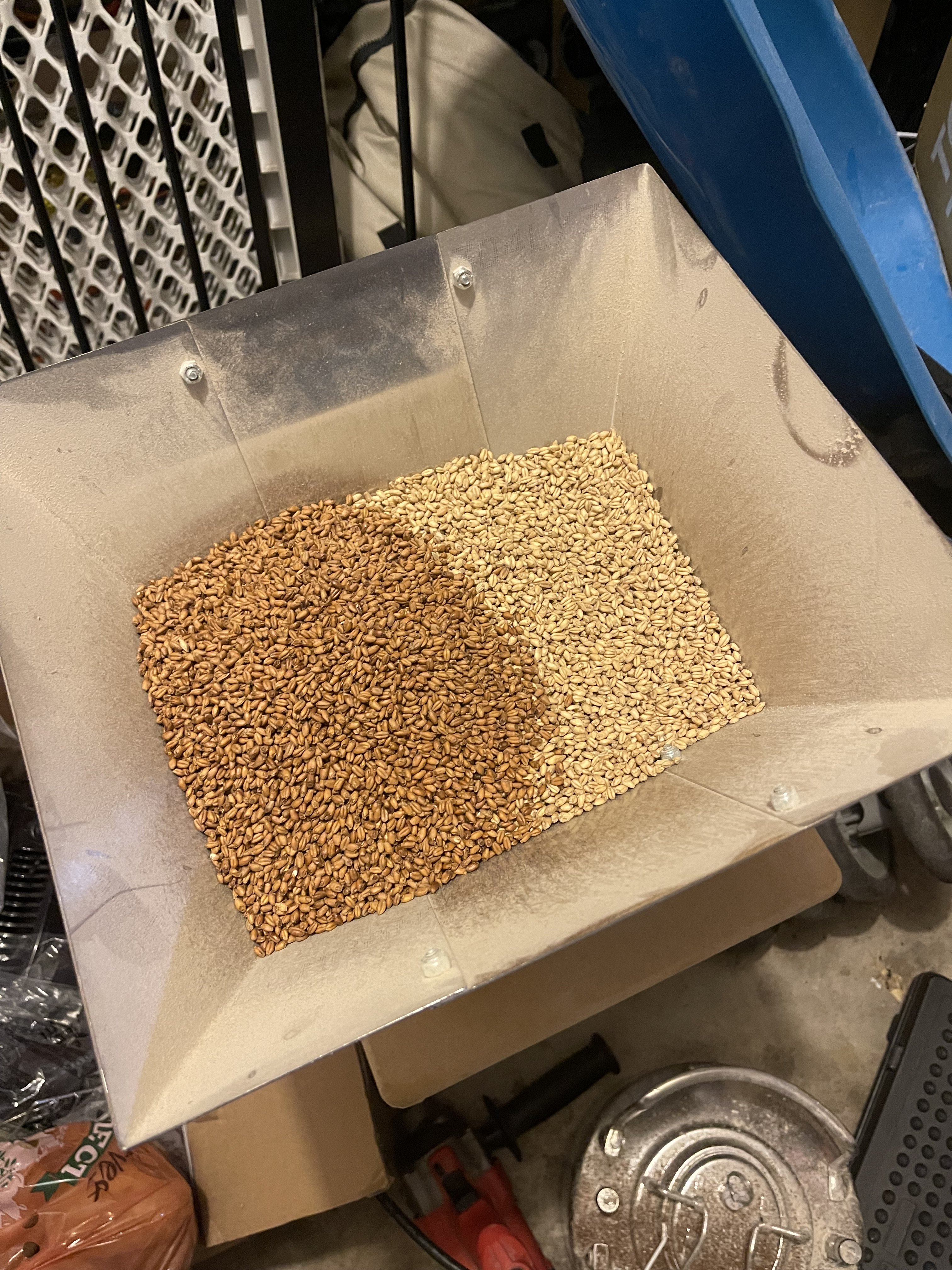beren
Well-Known Member
Iirc I read it’s supposed to have some sourness to it?

You didn't ask, but I'd strongly recommend Lallemand Kolsch over SafAle K-97. The latter can develop a tart flavor, while the former is just pure awesomeness.
Not at all. Ron Pattinson elaborated on this subject in details (sorry can't insert the link, I'm on the go right now) and stresses emphatically that "sour Grätzer" is nothing but a modern fad.Iirc I read it’s supposed to have some sourness to it?
would you mind sharing your recipe?I make my Grodziskie using Sugar Creek's Grodziskie malt. It looks to be out of stock at the moment, though if you're interested it might be worth dropping them an email -- they sometimes have new malt available but don't update the website, and/or they can tell you when it's due back. In any case, it's much more heavily smoked than the Weyermann; I get a stronger smoke flavor at ~15% of the grist (with the balance white wheat.) It's also just the thing for adding oak smoke to other styles (e.g., Doppelbock) without having to rearrange the whole recipe.
I've made Grodziskie and consider it some of my best beer. I've had others' ... all at around 4% ABV. You can absolutely make a fantastic beer at that strength. Authentic? I have no idea, and then there's your point that "authentic" doesn't necessarily even mean something clear for an old, evolving style without extant traditional brewers. But it certainly doesn't need to be strong to be good.
I wish session beers got more love in general. I'd happily do a Thanos-style snap and get rid of half of the triple IPAs and monster pastry stouts that are out there if it got me more bitters and milds and Kolsches.
Then again, ask me about the Imperial Eiskolsch I once made...
Well, finally I've had the time to revisit Ron's blog. His blog is probably the most extensive bit of information on the style in a language other than Polish. Here's the articles I've been referring to: Grodziskie - I wish they just wouldn't bother and Why do I bother where Ron brings some bad news to the adherents of the influential and vocal "sour grodziskie" sect.Ron Pattinson elaborated on this subject in details (sorry can't insert the link, I'm on the go right now)
Well, finally I've had the time to revisit Ron's blog. His blog is probably the most extensive bit of information on the style in a language other than Polish. Here's the articles I've been referring to: Grodziskie - I wish they just wouldn't bother and Why do I bother where Ron brings some bad news to the adherents of the influential and vocal "sour grodziskie" sect.
And here's all his blog entries relating to Grodziskie. Including some vintage gravity data, none of which, to my dismay, confirm speculations on the stronger Grätzer existing sometime in the old days of yore. Nothing really bad with that: I see no problem in brewing as strong a Grätzer as I like. Another thing, I can't claim my Grätzerbocks to be recreations of a historical style. Big deal!
^ That's the main thing.I don't believe grodziskie is a sour beer or should be thought of in modern production techniques as a sour beer
^ That's the main thing.
Grätzer, being a very light style (and no evidences have been found yet it's ever been otherwise), definitely wasn't a particularly sweet beer. Moreover, its acidity levels probably may have had variations throughout the years and batches. Nevertheless there are no sufficient historical data that allow to classify it in the cohort of sour beers.
Pattinson fights the emerging trend to make Grätzer an "obligatory" soured style, up to including the souring feature into the style definitions. Which trend grounds entirely on personal tastes and misconceptions of particular modern brewers and not on documented sources or on contemporary industrial standards. Which is a deeply flawed approach to any "historical recreation".
Well, finally I've had the time to revisit Ron's blog. His blog is probably the most extensive bit of information on the style in a language other than Polish. Here's the articles I've been referring to: Grodziskie - I wish they just wouldn't bother and Why do I bother where Ron brings some bad news to the adherents of the influential and vocal "sour grodziskie" sect.
And here's all his blog entries relating to Grodziskie. Including some vintage gravity data, none of which, to my dismay, confirm speculations on the stronger Grätzer existing sometime in the old days of yore. Nothing really bad with that: I see no problem in brewing as strong a Grätzer as I like. Another thing, I can't claim my Grätzerbocks to be recreations of a historical style. Big deal!
Here’s my most recent iteration, for a ~2.75-gallon batch:would you mind sharing your recipe?
thanks!
Ken
I have used 100% Weyermann Oak Smoked Wheat Malt and the smokiness was quite pleasant. (Surprised me, as I was hesitant to use 100%.)Also, don't be afraid to "oversmoke" your Grätzer. 100% and even 200% of Weyermann Smoked Wheat is far from enough to emulate the authentic level of smokiness. Thus say the Poles who've tried the real thing 40 years ago.
LOL, that's simple. Saying "200%" I mean if the current phenolic content of Weyermann Eichenrauchweizenmalz was multiplied by two, even then it won't be enough to recreate an authentic Grätzer.Please explaing how one can use more, as in the 200% mentioned here.
Thanks.Saying "200%" I mean if the current phenolic content of Weyermann Eichenrauchweizenmalz was multiplied by two, even then it won't be enough to recreate an authentic Grätzer.
Where Weyermann's specifies color as 2-2.7, Viking suggest only that the color will be < 10. Using oak from Poland, so I think that it will be worth a try. MoreBeer has it on hand, and I now have a bag on order.I see that Viking makes an oak-smoked wheat malt. Anyone brewed with that, and how does it compare with Weyermann, as to its smokiness?
The Grodziskie I brewed was with 100% Weyermann. The beer had a pleasant, but not strong, smoke aroma and flavor.
Where Weyermann's specifies color as 2-2.7, Viking suggest only that the color will be < 10. Using oak from Poland, so I think that it will be worth a try. MoreBeer has it on hand, and I now have a bag on order.

Tart yeast like K-97 is a flaw in Grätzer. US-05 and M54 are okayish but too much estery for the style. Among the dry options, Lalbrew Köln is the optimal choise and Gozdawa Alt is the ideal one.
Thanks for locating that. I almost went for 1BBL myself until I hit the shipping fee.
1BBL dose is $28. You then have shipping options:Oh god, how bad is it? I didn't even look. Maybe I can get my sister in law to bring some back on a flight from Poland :-D

Have you tried smoking wheat malt yourself?Haven't had an opportunity to try it, unfortunately.
As far as I can conclude from others' conversations, it barely differs from Weyermann.
I'm brewing a Grätzer today.
No experiments this time, just replicating the tried and true canonical recipe.
Got some rare ingredients: Polish yeast (the coveted Gozdawa Old German Ale which I think is ideal for Grätzer) and Polish Saazer (called Żatecki in this case). In the grain department, however, Weyermann is all that's available, so I'll have to be content with an undersmoked Grodzisz.
(The last word is a short affectionate term for Grodziskie in Polish, pronounced like "GRO-jeesh").
https://www.facebook.com/realbrewersyeast/Anyone close? Maybe can make a house call in the winter :-D1BBL dose is $28. You then have shipping options:
1BBL dose is $28. You then have shipping options:
View attachment 824764
If I only had a technical possibility, I would.Have you tried smoking wheat malt yourself?

Enter your email address to join: